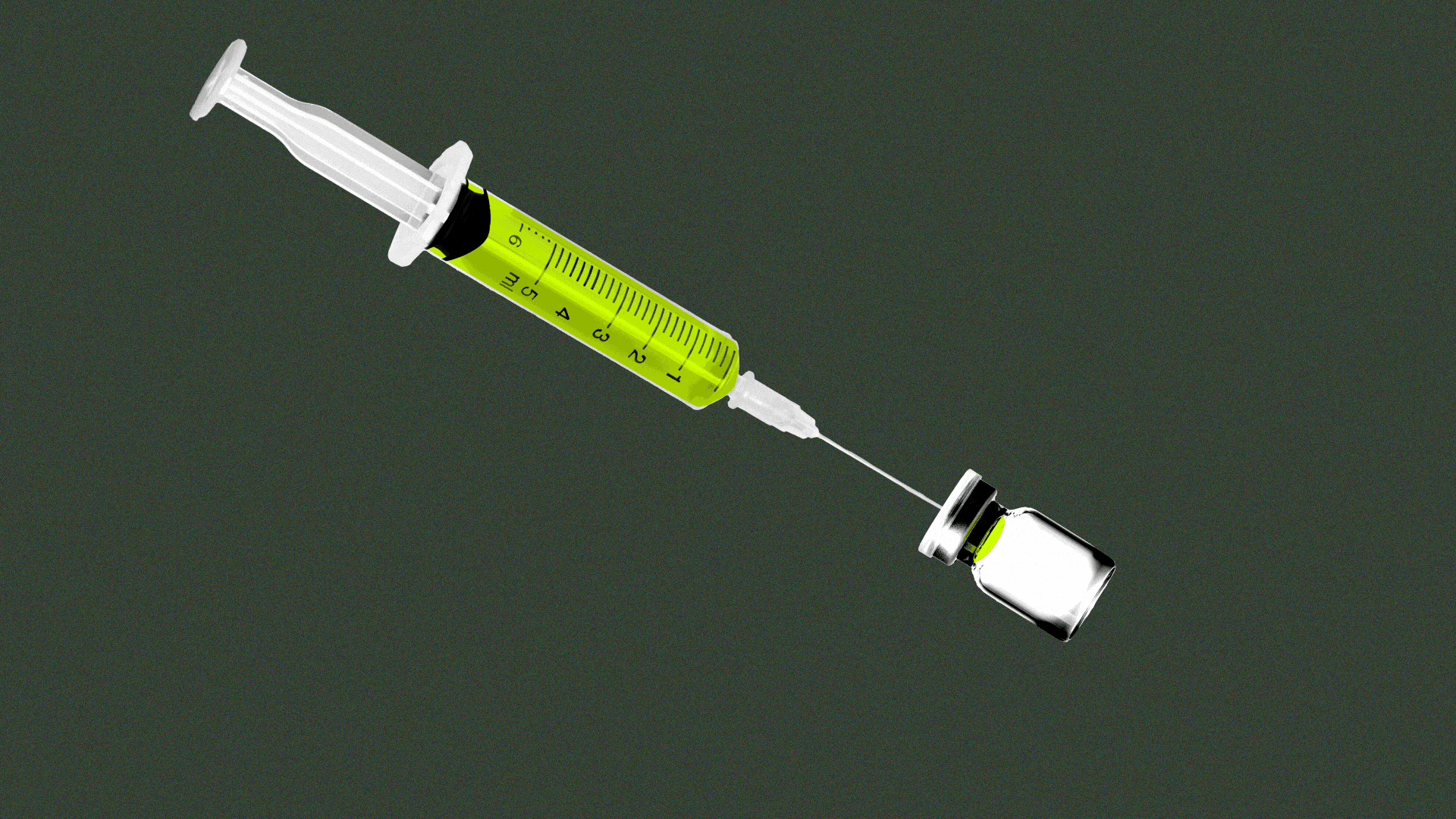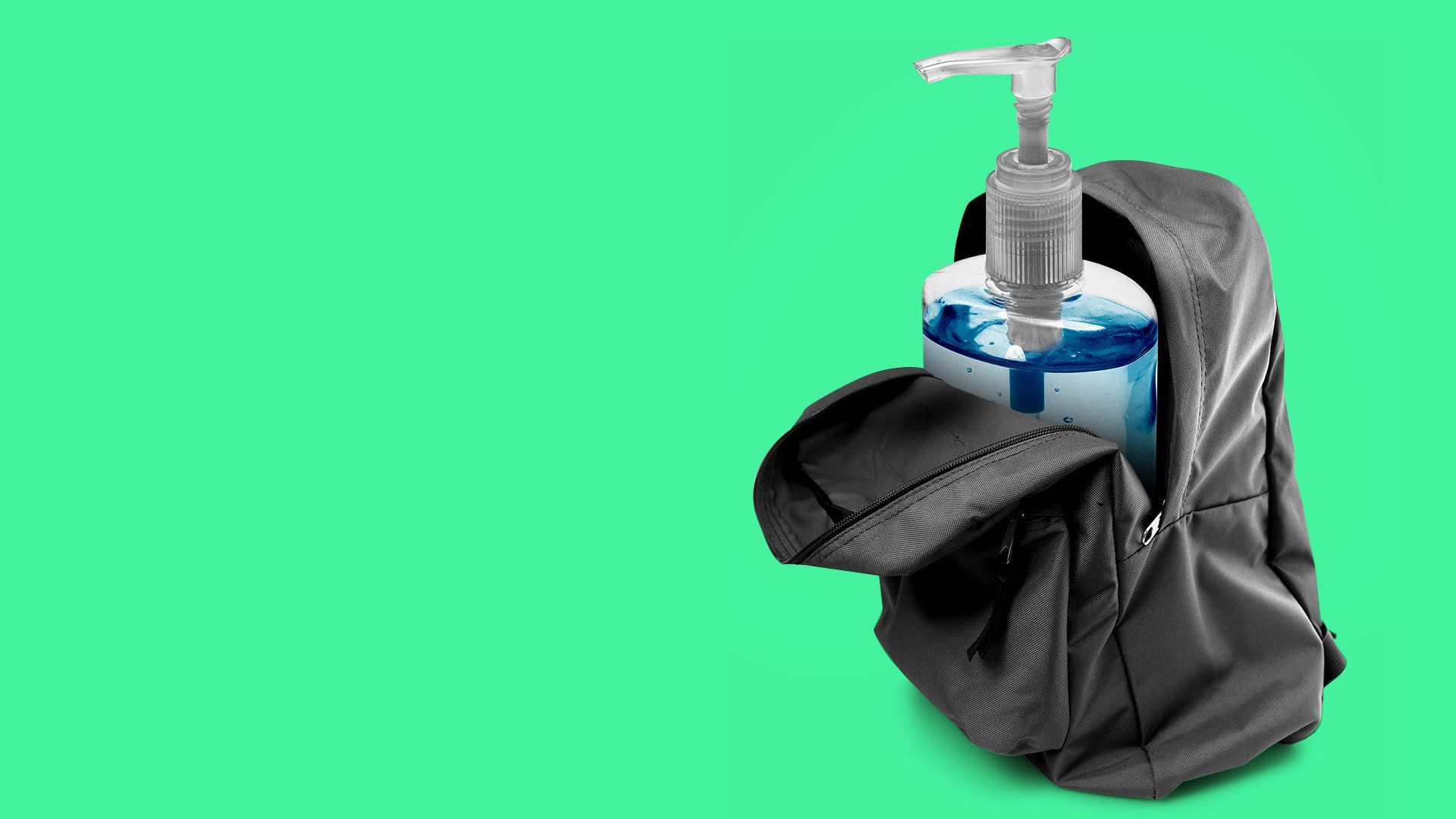| | | | | | | Presented By PhRMA | | | | Vitals | | By Caitlin Owens ·Mar 11, 2021 | | Good morning. Join Axios' Sam Baker tomorrow at 12:30pm ET for a virtual event on the future of health care, featuring Sen. Bill Cassidy (R-La.) and former U.S. deputy chief technology officer Ryan Panchadsaram. Today's word count is 1,126, or a 4-minute read. | | | | | | 1 big thing: America's nightmarish year is finally ending |  Data: CDC; Chart: Danielle Alberti and Andrew Witherspoon/Axios One year after the World Health Organization declared COVID-19 a pandemic, the end of that pandemic is within reach, Axios' Sam Baker reports. The big picture: The death and suffering caused by the coronavirus have been much worse than many people expected a year ago — but the vaccines have been much better. Flashback: "Bottom line, it's going to get worse," NIAID director Anthony Fauci told a congressional panel on March 11, 2020, the day the WHO formally declared COVID-19 to be a global pandemic. - A year ago today, the U.S. had confirmed 1,000 coronavirus infections. Now we're approaching 30 million.
- In the earliest days of the pandemic, Americans were terrified by the White House's projections — informed by well-respected modeling — that 100,000 to 240,000 Americans could die from the virus. That actual number now sits at just under 530,000.
- Many models at the time thought the virus would peak last May. It was nowhere close to its height by then. The deadliest month of the pandemic was January.
Yes, but: Last March, even the sunniest optimists didn't expect the U.S. to have a vaccine by now. - They certainly didn't anticipate that over 300 million shots would already be in arms worldwide, and they didn't think the eventual vaccines, whenever they arrived, would be anywhere near as effective as these shots turned out to be.
Where it stands: President Biden has said every American adult who wants a vaccine will be able to get one by the end of May, and the country is on track to meet that target. The bottom line: Measured in death, loss, isolation and financial ruin, one year has felt like an eternity. Measured as the time between the declaration of a pandemic and vaccinating 60 million Americans, one year is an instant. Go deeper. |     | | | | | | 2. Native American tribes leading on vaccines | | Native American tribes are pulling off many of the most successful coronavirus vaccination campaigns in the U.S., bucking stereotypes about tribal governments, Axios' Shawna Chen and Russell Contreras report. The big picture: Despite severe technological barriers, some tribes are vaccinating their members so efficiently, and at such high rates, that they've been able to branch out and offer coronavirus vaccines to people outside of their tribes. Why it matters: Native Americans are one of the most at-risk groups for contracting and dying from the coronavirus. - But tribal nations have rallied to get members vaccinated and helped nearby communities while major cities have struggled with rollouts.
Details: Tribes, which are sovereign nations that can set their own eligibility criteria, immediately got doses and launched vigorous campaigns on vaccines. - The White Earth Nation in Minnesota was so successful in early vaccinations that it immediately began vaccinating non-tribal members, Minnesota Public Radio reports.
- The Ute Mountain Ute Tribe in Colorado last week said after it vaccinates 1,900 of its tribal members and staff it will offer 2,000 doses to the general public.
- An AP analysis of federal data showed Native Americans were getting vaccinated at a rate higher than all but five states by February's end.
Between the lines: The early success is even more impressive when taking into account the dismal state of internet access on tribal lands. - A 2019 FCC report shows that 36% of housing units on tribal land have no access to broadband — compared to 8% on non-tribal land.
Go deeper. |     | | | | | | 3. A stark global vaccine divide | | Wealthy nations — including the U.S., the U.K. and the EU — have vaccinated their citizens at a rate of one person per second over the last month, while most developing countries still haven't administered a single shot, according to the People's Vaccine Alliance. Why it matters: As higher-income countries aim to achieve herd immunity in a matter of months, most of the world's vulnerable people will remain unprotected. - Experts say that mutations that may arise while the virus spreads could be a danger to us all, vaccinated or not.
The big picture: Even though more vaccines will arrive in developing nations soon, only 3% of people in those countries are likely to be vaccinated by mid-2021. - At best, only a fifth of their population will be vaccinated by the end of the year, per the People's Vaccine Alliance.
What we're watching: Three dozen countries have bought several times the amount of vaccine that they'll need to vaccinate their entire population. - The U.S. alone has ordered more than a billion extra doses, Science Magazine reports. Global health leaders are saying it's time to figure out where all of these excess doses will go.
- "Over the next year or two, U.S. surplus doses and those from other countries could add up to enough to immunize everyone in the many poorer nations that lack any secured COVID-19 vaccine," Science writes.
|     | | | | | | A message from PhRMA | | We are committed to being a part of the solution | | |  | | | | America's biopharmaceutical companies are committed to ending the pandemic by: - Continuing to develop treatments and vaccines to combat COVID-19,
- Working closely with governments, insurers and others to make sure vaccines and treatments are accessible and affordable.
| | | | | | 4. Community health centers' vaccination role |  | | | Illustration: Brendan Lynch/Axios | | | | 54% of people who got their first dose of the vaccine through a community health center were people of color, a Wednesday brief from Kaiser Family Foundation found. The big picture: Community health centers are a primary source of care for low-income populations and people of color, Axios' Marisa Fernandez reports. - By the numbers: 26% of the people who got their shots at a health center were Hispanic, and 12% were Black. In the U.S. overall, 9% of vaccine recipients so far are Hispanic and 7% are Black.
What's next: The Biden administration is providing $250 million in federal grants to community organizations working to combat broader inequities in the response to the pandemic. |     | | | | | | 5. New report urges reopening of schools |  | | | Illustration: Aïda Amer/Axios | | | | There's a dire need to reopen schools as quickly as possible — and it can be done without endangering teachers, families or the community, a report to be presented to members of Congress concludes. Why it matters: With its conclusion that masking, hand-washing, good ventilation and social distancing can make schools safe for everyone, the report tries to bring clarity to what has been an enormously polarizing issue, Axios' Jennifer Kingson reports. Driving the news: The report — commissioned by the Walton Family Foundation, the American Enterprise Institute, and five other nonprofits — analyzed the conclusions of more than 130 studies of whether schools can be reopened safely. It found the public benefits of school closures "questionable." - Any benefits to closing schools are far outweighed by the grave risks to children from remote-only schooling — risks that intensify the longer it continues, the report says.
- The harms include academic loss — so severe that it could set children back for life — and mental health problems related to loneliness and isolation.
- "Schools are not super-spreaders," observes the report, written by John P. Bailey, a former deputy policy director at the Department of Commerce.
What they're saying: "The kids that have been out of school the longest have the most urgent need of getting back in the classroom," Bailey tells Axios. Go deeper. |     | | | | | | 6. Catch up quick |  | | | Illustration: Aïda Amer/Axios | | | | YouTube has taken down more than 30,000 videos that made misleading or false claims about COVID-19 vaccines over the last six months, YouTube spokesperson Elena Hernandez said, offering the company's first release of numbers for such content, Axios' Ashley Gold reports. The U.S. is averaging fewer than 50,000 new coronavirus cases per day for the first time in over five months, Shawna writes. Two variants of the coronavirus that are possibly more infectious currently make up 51% of New York City's new coronavirus cases, health officials said Wednesday. The Centers for Medicare & Medicaid Services and Centers for Disease Control and Prevention updated their guidance on Wednesday to expand in-person visitation for nursing home residents. The House voted 220-211 on Wednesday to approve the Senate's revised version of Biden's $1.9 trillion coronavirus relief package, sending the bill to Biden's desk to be signed. |     | | | | | | A message from PhRMA | | Biopharma is committed to being a part of the solution | | |  | | | | As we usher in a new administration and Congress, there are many things on which we can all agree, like building a more just, equitable society. | | | | | | Axios thanks our partners for supporting our newsletters.
Sponsorship has no influence on editorial content. Axios, 3100 Clarendon Blvd, Suite 1300, Arlington VA 22201 | | | You received this email because you signed up for newsletters from Axios.
Change your preferences or unsubscribe here. | | | Was this email forwarded to you?
Sign up now to get Axios in your inbox. | | | | Follow Axios on social media:    | | | | | |
No comments:
Post a Comment